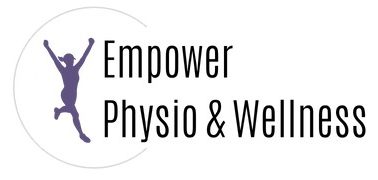ICYMI: Dry needling is one of our favorite treatments. We use it a lot when working with clients and even go see our own physical therapist to get it done to us. We’ve personally relied on this method to manage muscle tightness from being active in daily life. In fact, we love it so much that we’re doing a refresher blog post about it!
What is dry needling?
Dry needling is a technique for reducing pain and improving physical performance that’s gaining a lot of popularity–and for good reason. It’s one of the most efficient ways to release deep, chronic tension that’s been there for a long time while improving the way you move.
A medical professional inserts a super-thin needle into a muscle to penetrate it and help it relax. It can also help turn on a muscle that may be hard for you to activate on your own, improve blood flow, reduce swelling, and calm down irritated nerves. Think of it as the deepest and most effective deep-tissue massage you could ever get.
How does it work?
Dry needling is most often used to release muscle tension. When muscles are tight and tense, they can cause pain and not work as they should. Think of your muscles like a box of uncooked spaghetti. When you open the box, the pieces of spaghetti slide against each other really well. This is similar to the structure and function of your muscles. Muscle fibers are like pieces of spaghetti that slide alongside each other, causing your muscles to shorten and lengthen.
When a muscle contracts, the fibers slide towards each other and shorten the muscle. When a muscle relaxes, the fibers slide away from each other and lengthen the muscle. So, when you have tightness and knots in your muscles, it’s like cooking little chunks of the spaghetti. Imagine trying to slide partially cooked spaghetti out of the box…it doesn’t slide very well, does it?
Dry needling “uncooks” those cooked areas of spaghetti so they can slide on each other again. This allows your muscles to work like they’re supposed to, leaving you with less pain and more strength! The really cool thing is that dry needling has an immediate effect. Most of the time, people stand up after a needling treatment and notice improvement right away.
Beyond this local muscle effect, dry needling also improves the way your nervous system works. The nervous system is the king/queen of all the body systems. This is because it affects how the rest of your body operates, including your muscles. Dry needling helps to calm the nervous system and activate motor areas in your brain that allow you to move better.
What types of problems can dry needling treat?
There are all kinds of problems that dry needling can help alleviate including:
- Neck and back pain
- Headaches
- Jaw pain and tension
- Muscle strains
- Running-related and overuse injuries
- Tendonitis of the quad, rotator cuff, glute, hamstring, Achilles tendon and tennis elbow
- Bursitis
- Hip and knee pain
- Some nerve problems like pinched nerves and neuralgias
- Whiplash
What does it feel like?
Many people don’t experience pain when the needles are being inserted, but it is common to feel muscle twitches, tightness, or cramping as the needle enters the muscle. Typically, folks will feel a little achy for a day or two after their treatment, similar to muscle soreness after exercising.
What makes dry needling most effective?
Dry needling helps relax tight and tense muscles. But muscles don’t get tight and tense for no reason, so it’s most effective when combined with other treatments to address the cause of the muscle tension.
We nearly always combine dry needling with mobility exercises, strength training, movement retraining, posture correction, and stress management techniques. This way, your muscles can learn a new way of being so they don’t default back to being tense.
Is this the same thing as acupuncture?
Nope! The only thing that acupuncture and dry needling have in common is that they both use a needle. Dry needling doesn’t follow a map of predetermined points or affect organ systems as acupuncture does. Instead, it focuses on the specific soft tissue structure, and overall body movement, and typically has a much deeper application than acupuncture.
How can I try dry needling?
Physical therapists, physicians, and chiropractors are able to get certified in dry needling, however not all do. When searching for a provider, be sure to ask if dry needling is a service they offer. Contact us so we can chat about your individual needs and see if dry needling is a good fit for you.



